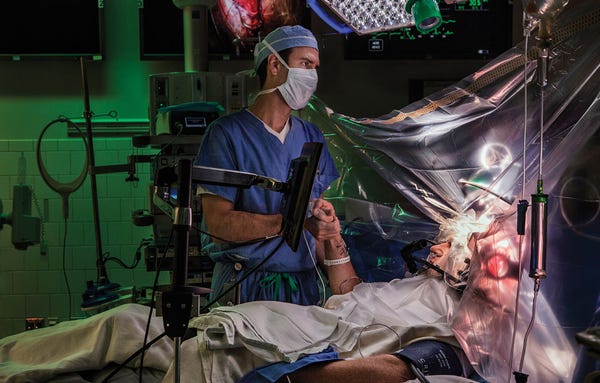Shocking Mental Disorders Into Submission
October 21, 2015
Neurologists begin to explore targeted electrical brain stimulation to treat various mental disorders including obsessive compulsive disorder and even depression.
Kristopher Sturgis

In extreme cases, obsessive compulsive disorder (OCD) can be a very debilitating condition. Patients can spend hours repeating a task, cleaning their surroundings to exhaustion, or simply taking a shower. Various drug therapies can help patients manage the disorder, but few treatments actually eradicate symptoms completely -- that is until electricity entered the fray.
Doctors at Massachusetts General Hospital have been exploring a new treatment option for OCD patients whose drug therapy treatments have produced limited results for their condition. This new method involves subjecting targeted areas of the brain to electrical currents, which stimulate the neural fibers of the brain to elicit specific reactions -- a process known as deep brain stimulation (DBS).
The procedure involves drilling two dime-size holes into the top of a patient's skull, and inserting two electrodes about seven centimeters deep into the gray matter of the brain. Doctors then create a pocket under the skin in the chest or abdomen of the patient, and implant a battery powered pulse generating device that connects to the electrodes in the skull through a wire.
Once the device and electrodes are in place, electrical currents are generated from the device and transmitted into the electrodes embedded in the skull. These currents stimulate the neural fibers that carry information from specific areas in the brain -- specifically those associated with motivation -- to the frontal lobe.
Despite the seemingly extreme nature of the procedure, DBS therapy has yielded some surprisingly encouraging results. The group reports that roughly 50 percent of the patients that underwent DBS treatments experienced an immediate decrease in OCD tendencies, before eventually dissipating completely.
DBS treatments have been around for almost two decades, as the practice was predominantly used to treat severe forms of Parkinson's disease. As part of the government's Brain Initiative, doctors and engineers at Massachusetts General have entered into a five-year, $30 million effort to explore DBS as a treatment option for severe psychiatric disorders, most of which are currently limited to drug therapies. While many different drugs such as Luvox and Prozac can help manage symptoms, they can also alter the chemistry of the entire brain, even the healthy areas.
Meanwhile, electrical stimulation provides doctors with the ability to target specific populations of neurons in the brain, isolating the treatment to the areas of the brain that are causing the problems. Of course doing so requires the abilty to identify which circuits and neurons are the source of the problem for each mental disorder -- an area of understanding that remains vital to progressing the technology as a treatment option going forward.
Despite the wealth of knowledge gained on mental disorders over the years, neuroscientists have found it difficult to observe how brain circuitry operates in real time. So the researchers at Massachusetts General are working on a technology that can record multiple patches of neurons simultaneously for extended periods of time. They believe that this new technology will allow them unprecedented access into the inner workings of the brain as it functions, helping them see and understand different types of mental illnesses unlike ever before. The hope is that with an increased understanding of these conditions, they will be able to refine different DBS treatments to suit individual mental disorders, including depression.
While results have been promising up to this point, there is still a long and arduous road ahead for researchers looking to adapt and enhance DBS technologies for treatment. And while DBS treatments may not be the immediate solution to any condition, it signals what could be a new, more targeted approach to identifying and treating conditions of the brain.
Learn more about cutting-edge medical devices at Minnesota Medtech Week, November 4-5 in Minneapolis. |
Like what you're reading? Subscribe to our daily e-newsletter.
About the Author(s)
You May Also Like


